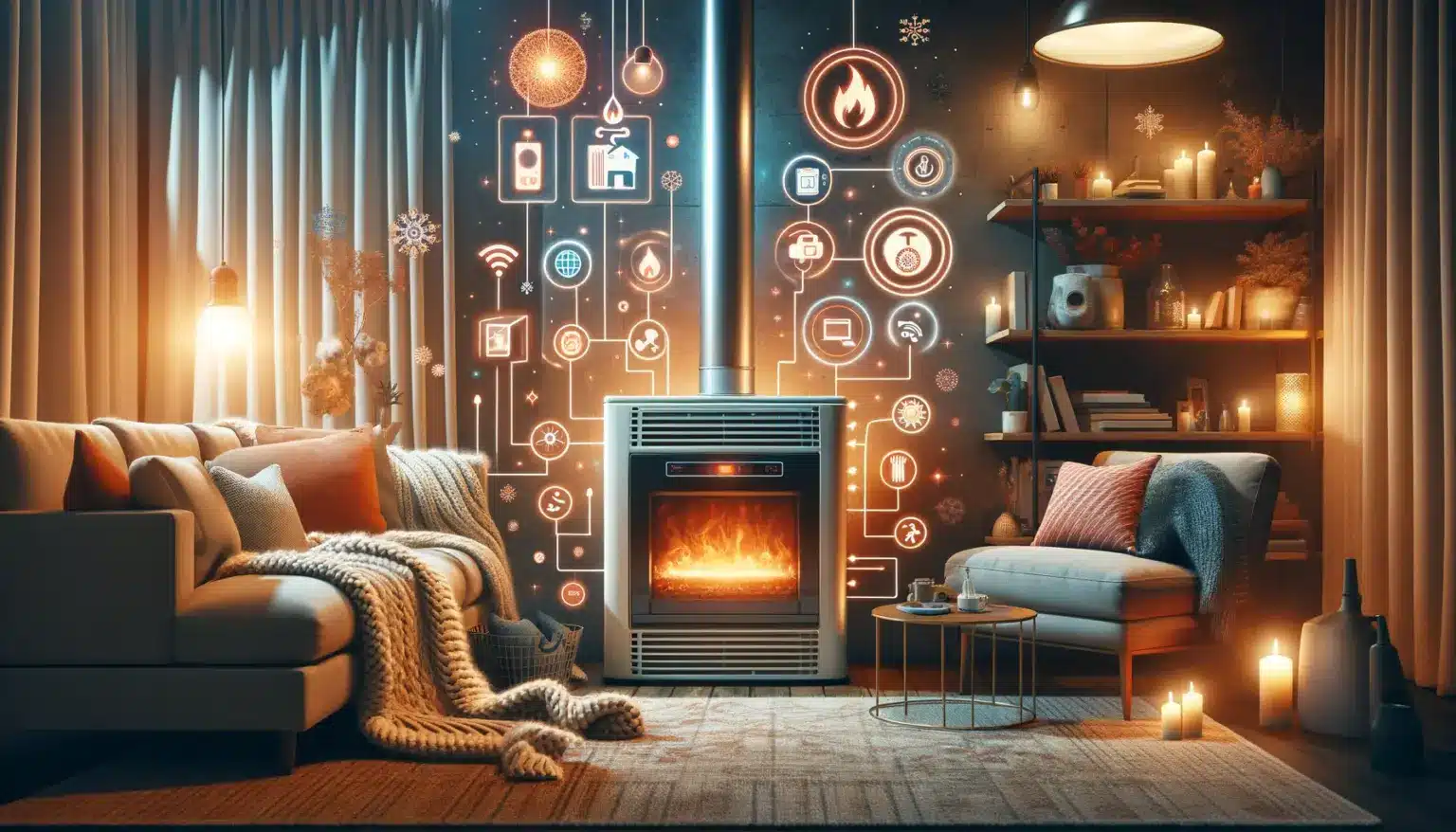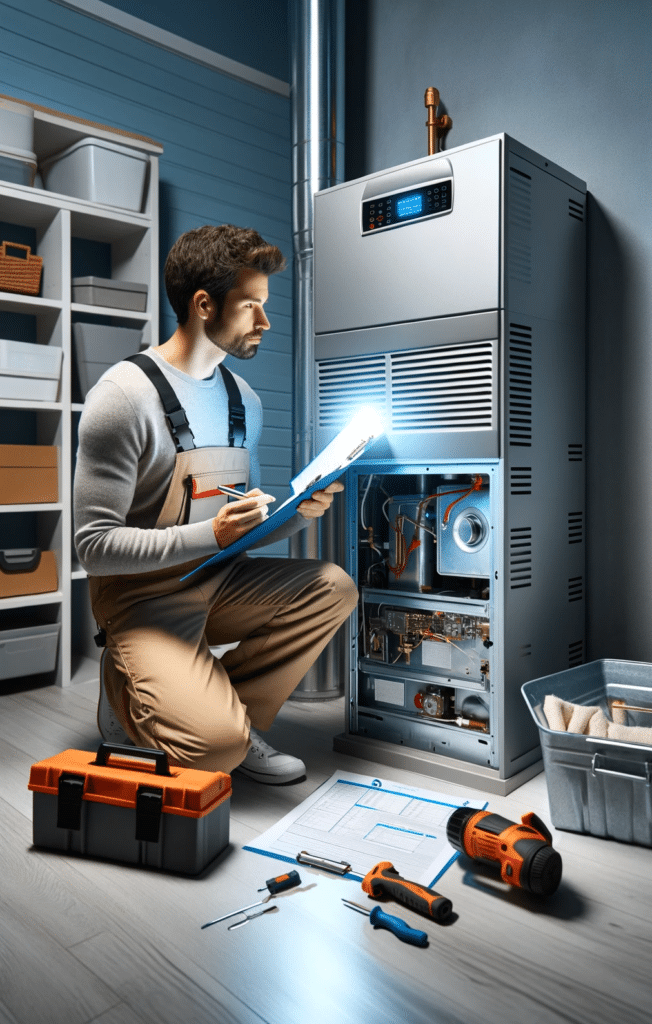
As the frosty tendrils of winter weave their way through British Columbia, the last thing you want is a furnace malfunction. Nippy mornings and chilly nights call for a home that’s toasty and warm—thankfully, effective furnace troubleshooting can ensure just that. Familiarizing yourself with the intricacies of furnace repair, installation, and maintenance is more than practical—it’s a necessity.
A fundamental piece of this wintertime wisdom is understanding the role of the often-overlooked heater pressure switch. By arming yourself with knowledge and taking a proactive approach to troubleshooting furnaces, you can stave off the cold before it even knocks on your door.
Recognizing Common Furnace Problems
As temperatures drop in British Columbia, your furnace becomes your closest ally against the cold. Recognizing signs of wear on crucial components like the furnace pressure switch, furnace fan, and the need for a furnace tune-up can be the difference between cozy evenings and unwanted chills. Let’s unpack some common problems that might arise, and the telltale signals that your furnace is pleading for attention.
Issues with the Furnace Pressure Switch
A failing furnace pressure switch might not be at the forefront of your mind, but it should be. This safety device ensures your furnace operates under safe pressure levels and, if faulty, can prevent your furnace from igniting. Signs of a compromised pressure switch include a furnace that starts then stops suddenly or one that doesn’t start at all. Should you encounter these red flags, it’s a clear signal to inspect the switch—seeking professional advice if necessary.
Furnace Fan Failures
Central to your furnace’s ability to circulate warm air is the furnace fan. If rooms in your home are receiving uneven heat or no heat at all, the fan might be to blame. Listen for unusual noises, check for restricted airflow, or any error codes on your furnace’s display. These symptoms indicate a fan issue that might range from obstructions to motor failures, all of which require prompt action.
Signs that Your Furnace Tune-Up is Overdue
Maintenance, such as a regular furnace tune-up, is invaluable in preventing cold-weather mishaps. Ignoring this can lead to diminished efficiency and increased breakdowns. Signs you’re due for a tune-up include rising energy bills, frequent cycling, or the age-old “it’s not as warm as it used to be” feeling. Proactive tuning keeps your furnace running smoothly, ensuring you and your family stay warm through winter’s worst.
Furnace check steps
When the mercury dips and you rely on your furnace to keep your home snug, encountering any disruptions can be more than just an inconvenience—it can be downright frosty. Settling into the troubleshooting saddle can often save you time and money before winter’s bite grows too sharp. From assessing the pressure switch furnace to initiating a comprehensive furnace tune-up, these troubleshooting steps can guide you through the basics of keeping your heat humming harmoniously.
Start with the simplest tasks to rule out common problems:
- Ensure your thermostat is set to heat mode and the temperature is appropriate.
- Check the furnace’s power source—look for a tripped breaker or a blown fuse.
- Inspect filters for clogging; a dirty filter can hinder furnace operation.
Advanced furnace troubleshooting involves a bit more technical insight but is still manageable for the keen DIYer:
- Observe if the furnace is igniting properly. A repeated clicking noise without ignition suggests a problem.
- Pressure switch furnace woes? Inspect the tubing for blockages and ensure it’s attached properly.
- If your furnace short cycles, investigate the thermostat for loose wiring or check if it’s in a drafty location.
Troubleshooting furnace issues often boils down to keeping a regular check on performance and acting swiftly at the first sign of a hiccup. If you find yourself out of depth, or if a problem persists, consulting a professional might be your best next step to restoring warmth and peace of mind as the BC chill sets in.

Maintaining Your Furnace in BC's Chilly Climate
The frost-laden winters of the Lower Mainland demand a furnace that’s up to the task. Furnace maintenance and timely furnace tune-ups are not just about comfort, they’re about cost efficiency and safety as well. Ensuring your heating system is in top condition can prevent those heart-sinking moments when the heat gives out on the coldest night of the year.
Below, we cover the routine checks that any BC homeowner can perform, explain when to involve the professionals, and outline how to optimize your furnace’s energy consumption.
Regular Furnace Tune-Up and Maintenance Checklist
- Inspect and clean or replace air filters every 3 months to ensure proper airflow.
- Check the thermostat for accuracy and proper operation.
- Clean vents and ducts to remove any blockages and maintain air quality.
- Listen for unusual sounds that could indicate mechanical issues.
- Monitor your furnace’s starting cycle to ensure it isn’t turning on and off more frequently than it should.
- Keep the area around your furnace clear of debris to prevent fire hazards.
A furnace tune-up might seem daunting, but it’s an essential piece of home maintenance that can vastly prolong the life of your furnace. Regular check-ups can catch issues like a malfunctioning furnace pressure switch or worn mechanical parts before they demand costly repairs or replacements.
When to Call Veteran Heating and Cooling: Emergency Furnace Repair
While routine furnace troubleshooting is within most homeowners’ wheelhouse, some problems are best left to the professionals. If you face a furnace breakdown or notice persistent issues that simple troubleshooting can’t fix, it’s time to call Veteran Heating and Cooling at 604-991-4894. Reliable, experienced, and ready to tackle emergency furnace repairs, Veteran HVAC is your go-to for restoring warmth and security to your home.

Optimizing Your Furnace for Energy Efficiency
Operating an energy-efficient furnace isn’t just good for the environment; it’s also kind to your wallet. By keeping up with regular furnace maintenance, you are ensuring your heating system isn’t working harder than it needs to—which translates directly to savings on energy bills. Make sure your furnace receives an annual professional furnace tune-up, and consider upgrading to a smart thermostat to optimize heating times and reduce energy consumption.
Veteran Heating and Cooling professionals can help you understand how to achieve the best energy efficiency for your specific furnace model. So not only do you contribute to a greener planet, but you also enjoy a cozier, more cost-effective home throughout the BC winter.
FAQ 🤔
What should I do first when my furnace stops working?
Start with a basic furnace troubleshooting step by checking your thermostat settings, ensuring it’s on the correct mode and temperature. Additionally, make sure the furnace switch is turned on. If the problem persists, proceed to check the heater pressure switch and the furnace filter for blockages.
How can I tell if my furnace pressure switch has issues?
A faulty furnace pressure switch often results in the furnace failing to ignite or shutting off unexpectedly. If you hear the furnace trying to start several times without success or observe a flashing light code on the control panel, it could indicate a pressure switch problem. Consulting your furnace’s manual can provide specific guidance for troubleshooting furnace pressure switch issues.
What are the signs of a failing furnace fan?
If your furnace fan is not operational, you might notice weak or no airflow through your vents, or hear unusual noises such as rattling or humming from the furnace. This could potentially be a sign of a malfunction in the furnace fan or related components.
How do I know if my furnace tune-up is overdue?
Common indicators that it’s time for a furnace tune-up include increased heating bills, reduced heating efficiency, strange noises, and frequent cycling of the furnace on and off. It’s generally recommended to have a professional furnace tune-up annually before the onset of cold weather.
What’s included in a regular furnace tune-up and maintenance checklist?
A regular furnace tune-up typically includes cleaning of burners, inspection of the heat exchanger, checking and adjusting the heater pressure switch, examination of belts and motors, verifying thermostat operation, and replacing furnace filters. Scheduling regular maintenance ensures your furnace operates effectively and safely.
When should I call Veteran Heating and Cooling for emergency furnace repair?
Reach out to Veteran Heating and Cooling at 604-991-4894 for emergency furnace repair if you experience complete furnace failure, smell gas, notice irregular flames in the burner, or encounter persistent issues that you can’t resolve through troubleshooting furnace problems yourself.

